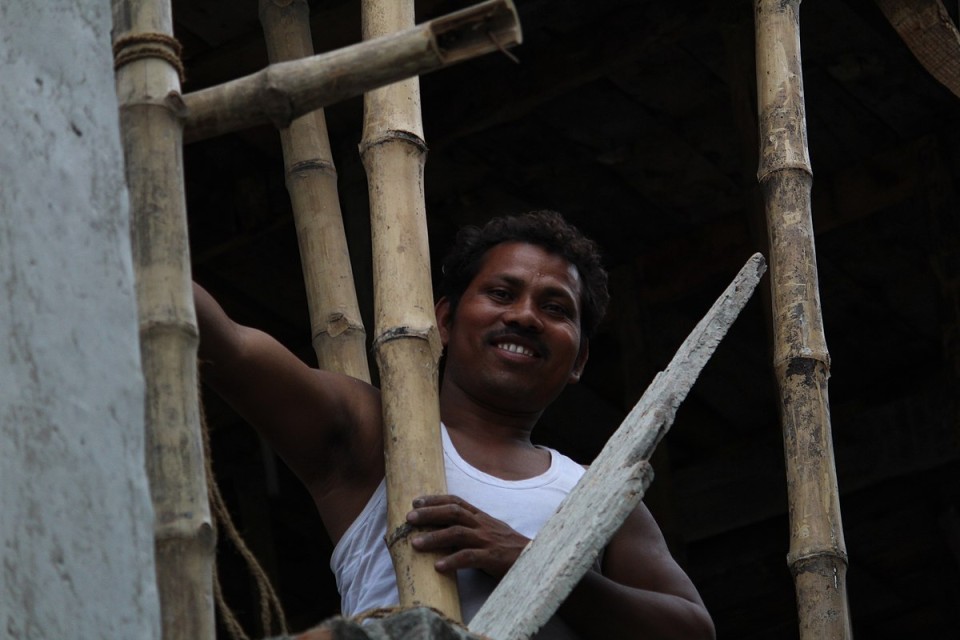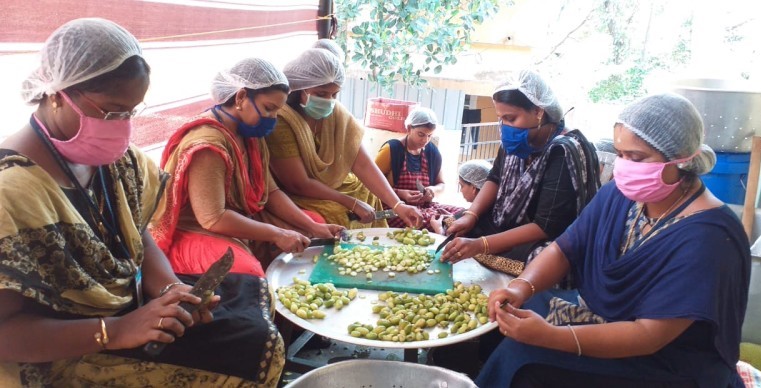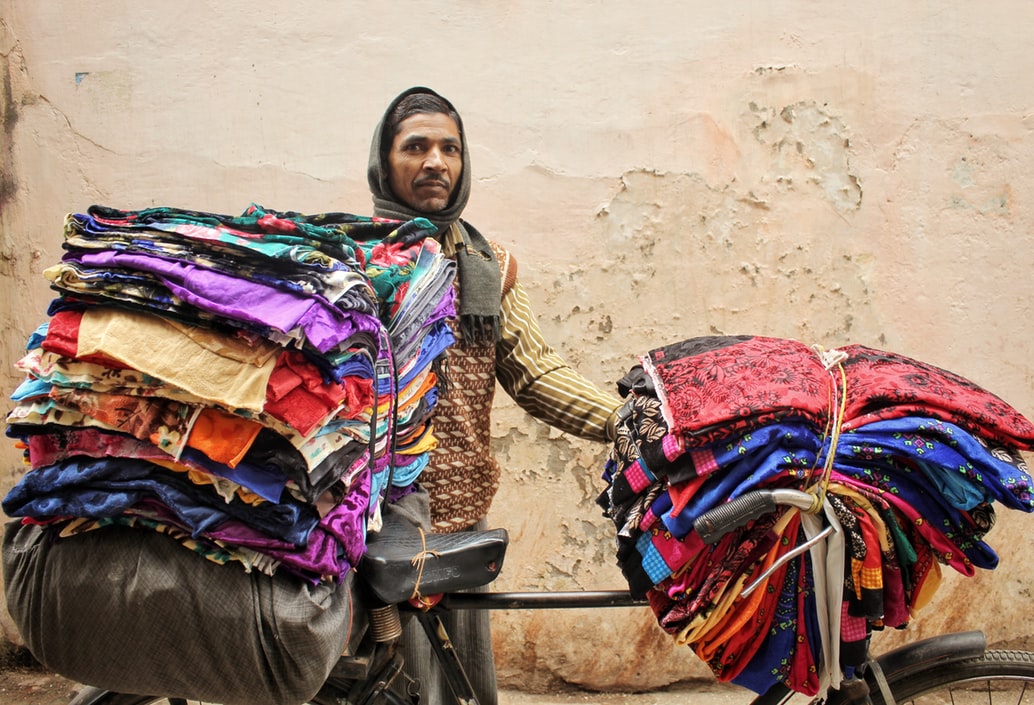Every year, around nine million workers move from rural areas to cities in search of work at construction sites and factories. In fact, the construction sector currently employs 55 million daily-wage workers (the highest number of migrant workers across India), and contributes to approximately eight percent1 of the country’s GDP.
As we know, the effect of the countrywide lockdown on daily wage workers has been catastrophic: industries shutting down have rendered workers unemployed across the country, the sudden announcement of the lockdown has denied migrant workers the opportunity to collect their wages or make arrangements for going home to their villages, and a closing of transportation facilities has left them trapped in cities without enough resources.
The result: 92.5 percent of the labourers surveyed had already lost anywhere between one to three weeks of work. Based on their average day rate, this translates into an estimated income loss between INR 4,000-10,000 per worker.
Related article: Supporting informal workers during the COVID-19 crisis
While various national- and state-level immediate-support schemes have been announced, for them to materialise on ground, the government needs to strengthen its existing contingency plan. This includes not only employing all resources at its disposal, but also partnering with organisations that have relationships with the target communities.
By combining an analysis of government schemes, the Jan Sahas database of 60,000 migrant workers in the construction sector, a rapid assessment survey of 3,196 migrant construction workers in North and Central India, and brief interviews with five migrant worker families, this report by Jan Sahas looks into what the ground reality for these workers is like, and makes recommendations accordingly.
Here are some of the highlights.
Recommendations for the central government
Seventeen percent of surveyed labourers did not have bank accounts at all. This is in addition to the vast number of bank accounts that are inactive. To ensure that compensation is able to reach them, cash payment at doorstep using gram panchayat and postal offices should also be looked into, in addition to using options like Jan Dhan accounts and Aadhar identification.
Forty-two percent of surveyed labourers said they had no ration left for the day, let alone for the duration of the lockdown. If the lockdown continues beyond 21 days, a staggering 66 percent mentioned that they would not be able to manage their household beyond a week, while 22 percent said they would be able to manage for up to a month.
Given the intensity of loss borne by each household, the report suggests that funds from the PM-CARES Fund be immediately utilised for income assistance to labourers for the next 3-6 months, to prevent indebtedness and consequent bonded or forced labour.
Related article: Six things to consider about PM-CARES
Moreover, the pension amounts announced (INR 1,000 payment for all pensioners and INR 1,500 for women beneficiaries of the Jan Dhan Yojana for three months) is also insufficient—it adds up to INR 333 and INR 500 in a month, respectively. The report recommends increasing the amount to a minimum of INR 1,000-1500 per month for the next six months. Additionally, the report asks the centre to support state governments in providing unemployment allowances—a feature available under both the Mahatma Gandhi National Rural Employment Guarantee Act (MGNREGA) and the Building and Other Construction Workers’ Act (BOCWA) laws.
Thirty-one percent (984 respondents) of those surveyed mentioned having loans, of which more than 79 percent believed that they would not be able to pay off their debts in the recent future. With this in mind, a directive should be issued asking banks to waive off loans for migrant labourers and to reschedule or waive self-help group (SHG) loans. Additionally, another directive addressing moneylenders, contractors, and recruiters should be released asking them to defer payments for the next two to three months.
Although the Centre has raised wages under MGNREGA by INR 20, from INR 182 to INR 202 a day, labourers will not benefit from this as worksites are not functional due to the lockdown. Therefore, it is imperative that the 118 million active labourers registered with the scheme are paid full wages for lost days.
The government is yet to clear about INR 1,830 crore wages pending under MGNREGA.
Additionally, the government is yet to clear about INR 1,830 crore wages pending under MGNREGA. To this end, a preliminary assessment of the number of workers who have wages pending and reasons for the delay or non-payment, needs to be conducted.
Lastly, efforts must be taken to extend the coverage of the scheme, so that more labourers can be reached. Jan Sahas’ database shows that only 30 percent of the labourers posses job cards.
Despite the Ministry of Labour and Employment advising all public and private establishments to not terminate their employees (especially the casual or contractual labourers) or reduce their wages, approximately 90 percent of surveyed labourers have lost their source of income in the last three weeks.
Therefore, measures must be taken to monitor the infrastructure development companies, and similar companies and contracting agencies, to ensure they comply with the directive, retain labourers, and pay them full wages for the lockdown period.
Additionally, the companies that have maintained labour camps must be advised to continue with all facilities (food, water, sanitation, hygiene, etc.) during the lockdown. These should be monitored by the Labour Department, as is done in Kerala. Lastly, a helpline should be made available, so that reports of landlords evicting tenants can be filed.

A staggering 94 percent of surveyed labourers currently do not have Building and Other Construction Worker (BOCWA) cards. | Picture courtesy: Wikimedia Commons
Recommendations for state governments
Implementing the National Disaster Management Plan will allow for decentralised planning and response, with clear channels of communication and responsibility, thereby allowing for the cultural and regional diversities to be accommodated (as opposed to a one-size-fits-all solution).
Additionally, state machinery at the village-level needs to be activated, so that gram panchayats are empowered to be the nodal institutions working in close coordination with the district administration. This is critical for the implementation and monitoring of health and relief measures initiated by the state.
Lastly, at a district and taluk level, work needs to be done in conjunction with civil society organisations—unions, nonprofits, community based organisations, mass associations, and religious institutions—to ensure that the most vulnerable populations (migrant workers, disabled persons, single women households) are able to avail of initiatives undertaken by the state.
A staggering 94 percent of surveyed labourers currently do not have BOCWA cards. If this dataset is representative of the 55 million labourers currently employed in the construction sector, more than 51 million labourers will not have access to any benefits.
Related article: “The government response cannot begin and end with the lockdown”
In fact, given the situation, efforts must be made to expedite the implementation of the Model Welfare Scheme for Building and Other Construction Workers, which came into force in 2018. The plan includes provisions for inclusion of migrant labourers and increasing the coverage of the scheme, along with social security measures, including life and disability cover, health and maternity cover, education, housing, skill development, awareness programmes, and pension. Additionally, it lays down important guidelines regarding the usage of the cess fund to ensure welfare of the labourers.
Based on the directives issued by the central government, the current supply of free ration will only be made available to holders of ration cards.
More than 42 percent of the surveyed labourers said that they did not have enough ration left for the day. Close to 40 percent said that they did not have essential provisions to sustain themselves for two weeks, while the remaining 18 percent had enough for two to four weeks. Further, they faced obstacles in accessing ration—14 percent did not even have ration cards, approximately 33 percent cited a lack of funds, and 12 percent said it was a problem of location as they were migrants.
Concrete efforts must also be taken to ensure that those without ration cards are also provided with necessary supply of ration for the next three to six months.
Given the gravity of the situation, states must increase the number of months of free ration being provided. With no possibility of work opportunities in the near future, state governments must ensure that free ration is provided for a minimum of three months, and up to six months.
Concrete efforts must also be taken to ensure that those without ration cards are provided with the necessary supply of ration for the next three to six months. In the case of workers stranded in destination states—who are holders of ration cards in their source states—efforts must be made by state authorities to ensure a seamless delivery of ration.
States must work closely with the private and nonprofit sectors to avail of existing services and infrastructure like helplines, delivery services, value chain consolidation, and so on, instead of beginning new lines of operations.
Additionally, efforts need to be taken to make information more accessible. Sixty-two percent of the surveyed workers did not have any information about emergency welfare measures provided by the government, and 37 percent of them did not know how to access the existing schemes.
Different levels of the state administration can collaborate with TV channels, radio stations, online digital platforms, and newspapers, to create communication in local languages, as well as in the languages of major migrant workers. The messaging will help inform people about the schemes that they can access, safety measures that they can adopt, as well as bridge information gaps that lead to rumour mongering and fake news. Regular state and national level bulletins and digital press conferences can also help improve the communication between the government and its citizens.
At a system level, measures need to be put in place to ensure that women labourers do not lose the assistance they are entitled to, due to a gender bias in counting and the assumption that the male family member is the sole bread winner.
Additionally, frontline workers need to be engaged to identify and provide emergency support to pregnant women—328 of the labourers surveyed mentioned having a pregnant family member, and half of them said they didn’t have enough ration to sustain for the week.
Lastly, with women migrant labourers also being put into relief camps at destinations, menstrual hygiene products should be included as an essential good to be provided to them.
Mental health can be extremely fragile during this period of uncertainty, with loss of income, unemployment, inability to purchase essential goods for survival, along with fears of contracting the virus. The report therefore recommends establishing helplines run by nonprofits that provide psycho-social assistance to migrant labourers.
Finally, it is important to increase coordination between the central and state governments. This will ensure parity in economic relief measures being announced at state-level, so that newer hierarchies of poverty and discrimination are not created.
- Page 18 of the Economic Survey 2018-19.
—
Know more
- Read the full report ‘Voice of the Invisible Citizens‘ by Jan Sahas, for more detailed analysis.
- Read how 136 million jobs are at risk in post-COVID-19 India, across the informal sector.


